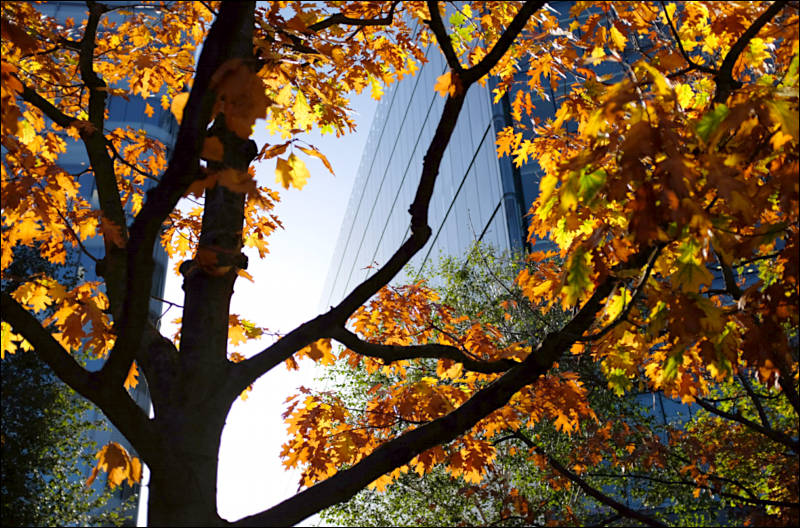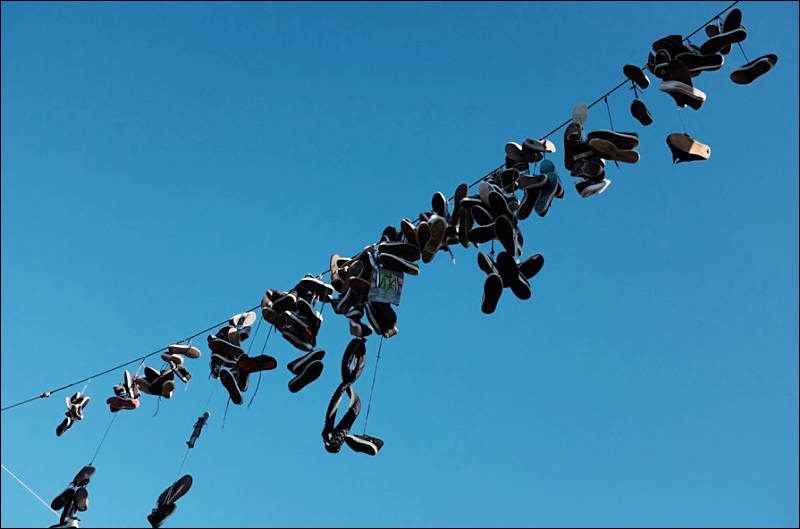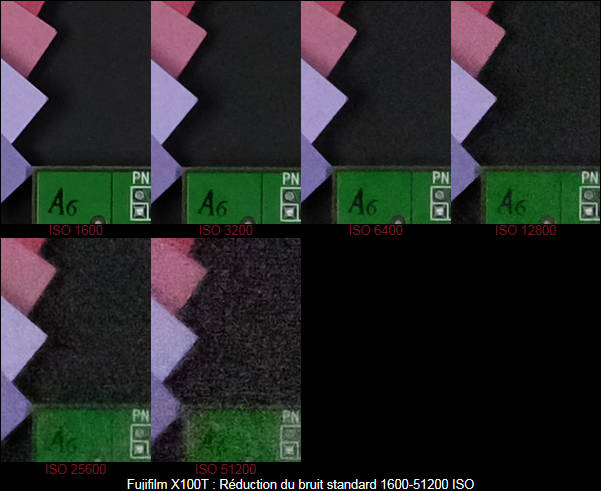
It allows to keep PV going, with more focus towards AI, but keeping be one of the few truly independent places.
-
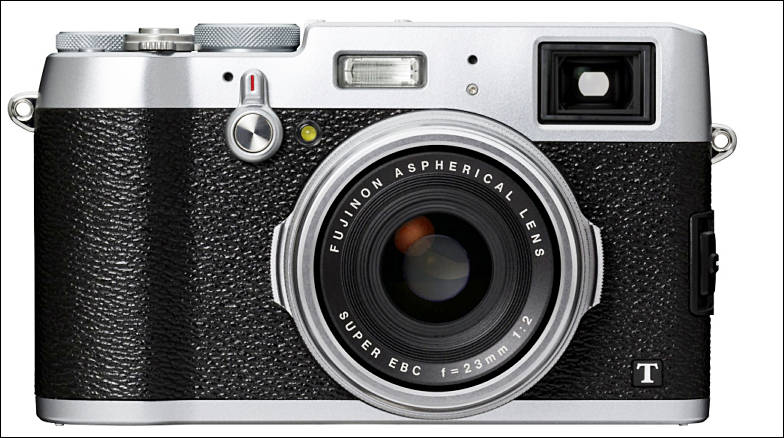
Specs:
- 16.3MP APS-C size X-Trans CMOS II sensor
- Advanced Hybrid Viewfinder (OVF / EVF) equipped with an Electronic Rangefinder
- Intelligent Hybrid AF in 0.08 seconds
- FUJINON 23mm (35mm in 35mm format Equivalent) F2 lens in 8 glass elements in 6 groups with
- ND filter equivalent to 3 stops of aperture
- High speed continuous shooting of 6fps (25 frames continuously in JPEG at full resolution)
Available at:
- Black - http://www.amazon.com/Fujifilm-X100T-Digital-Camera-Black/dp/B00NF6ZHNG/
- Silver - http://www.amazon.com/Fujifilm-X100T-Digital-Camera-Silver/dp/B00NF6ZGY6/
PR
In March 2011, Fujifilm released the X100, opening up a new market for premium compact cameras. In February 2012, the second generation X100S was released, complete with a newly developed sensor, processor, and an advanced Hybrid Viewfinder. Now, the X100T marks the ultimate evolution as the third generation of the X100 Series, reflecting the feedback from customers for each and every part, including image quality, viewfinder and operability. The X100T is available in both black and silver versions and includes three key changes:
World’s first Advanced Hybrid Viewfinder, complete with Electronic Rangefinder
The X100T’s optical viewfinder can simultaneously display the focus area by using the built-in ND filter. Users simply need to turn the camera’s focusing ring for a mechanical rangefinder-style view. Additionally, Focus Peaking and Digital Split Image modes can be selected and the magnification of the focused area can be changed.
With the optical viewfinder, Real-time Parallax Correction has also been added to ensure more accurate framing. Parallax error, which occurs during close-up shooting, is automatically corrected in real time so users no longer having to reframe after focusing.
In addition, reduced display time lag, automatic brightness control, and enhanced Live View settings have been added to the electronic viewfinder providing a more comfortable shooting experience.
Increased operability with the 1/3 stop aperture ring, command dial, 4-way controller, and seven Fn buttons
Until now, setting the aperture in 1/3 steps needed to be done using the command lever. Now, it is done using the aperture ring. Also, the command lever has been changed to a command dial, and with the addition of a four-way controller, operability has been dramatically improved. The X100T is also equipped with seven Fn buttons, each one of which is customisable, while the rear LCD has been ungraded to 1.04M-dot 3-inch monitor, greatly improving visibility.
New Classic Chrome film simulation mode, developed through 80 years of photographic experience
Fujifilm’s unique Film Simulation modes that mimic the effects of photographic films help users to reproduce warm skin tones, bright blue skies and rich green trees. Classic Chrome, which delivers muted tones and deep colours, has been added to the existing selection.
World’s first Advanced Hybrid Viewfinder, complete with Electronic Rangefinder
To facilitate manual focusing while using the Optical Viewfinder, the focus area is enlarged and displayed in the bottom right of the viewfinder. Part of the original optical image is blocked and then the digital EVF display is projected in the resulting space. Manual focusing that was previously difficult with the optical viewfinder is made easier, much like a mechanical rangefinder.
- Focus Peak Highlight and Digital Split Image can also be selected on the enlarged area, and the magnification of the focused area can be changed.
- Compared to the X100S, bright frame coverage has been increased from 90% to 92%.
- Real-time parallax correction has been added for more accurate framing. Parallax, the gap between the shooting range frame and actual shooting range when taking pictures close up, is automatically corrected in real time. Reframing after focusing is no longer necessary.
- Visibility has improved under a variety of conditions, from bright scenes outdoors to dark scenes indoors, by automatically controlling finder brightness.
- The Live View display can also be set to “Preview Pic. Effect”, which recreates selected camera effects such as Film simulation modes. Equally, a more natural Live View close to what the naked eye sees can be chosen by turning this option off.
- The image within the finder is smoother in low light conditions as it is displayed at the maximum frame rate possible.
- Display time lag, inherent problem with electronic viewfinders, has been significantly reduced.
Increased operability
- On previous X100 series models, setting the aperture to 1/3 stops could only be done with the command lever, now it can be done using the aperture ring. The exposure compensation dial has been extended to ±3 stops. Also, the command lever has been changed to a command dial, and with the addition of a four-way controller, operability has been dramatically improved.
- The X100T is equipped with seven Fn buttons, each one of which is customisable. Further user customisation is offered on via the Q Button on the rear of the camera: all 16 functions can be chosen according to the user’s preference.
- Die-cast magnesium is used for the top and bottom of the body, for a precise, light and highly durable design. A special coating is used for the surface finish, creating a premium feel.
- The exterior is finished with non-slip synthetic leather, which is durable and resilient.
- Applying a grooved pattern to the aperture ring, shutter speed dial, and exposure compensation dial improves grip and looks good.
- The rear LCD has been ungraded to 1.04M-dot 3-inch monitor, greatly improving visibility.
- Each and every part is made in Japan, for high precision and finish.
Installed with the fastest electronic shutter at 1/32000 sec., expanding the shooting range
A completely silent electronic shutter that is capable of exposures up to 1/32000 sec. has been added. Photos with a shallow depth of field can now be shot with the aperture wide open on snowy fields or the beach under clear skies. As there are no mechanically operated parts, natural facial expressions such as those of sleeping babies can be captured more easily than ever before.
Full HD video with the X-Trans CMOS II sensor
- Frame rates can be selected from 60fps, 50fps, 30fps, 25fps and 24fps for Full HD movies, supporting worldwide motion picture formats.
- The world’s first*2 videos can be shot with the optical viewfinder, just like using a film movie camera
- Film simulation modes can be used on videos to add creative colour effects, plus bokeh can be created by using the lens’s wide maximum aperture.
- Manual exposure can also be set during video shooting. Aperture, shutter speed*3 and ISO sensitivity can be set, allowing videos to be shot just as the user wishes.
- A high bit rate of 36Mbps enables clear capture of delicate movement.
- High-speed, high-precision focusing thanks to Intelligent Hybrid AF, which switches between phase detection AF and contrast AF according to the scene, even during video shooting. Manual focus is also possible.

 sigma13.jpg784 x 438 - 70K
sigma13.jpg784 x 438 - 70K -

 sigma18.jpg800 x 543 - 59K
sigma18.jpg800 x 543 - 59K -
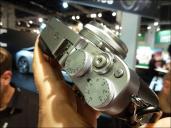
 ats14.jpg775 x 581 - 70K
ats14.jpg775 x 581 - 70K -
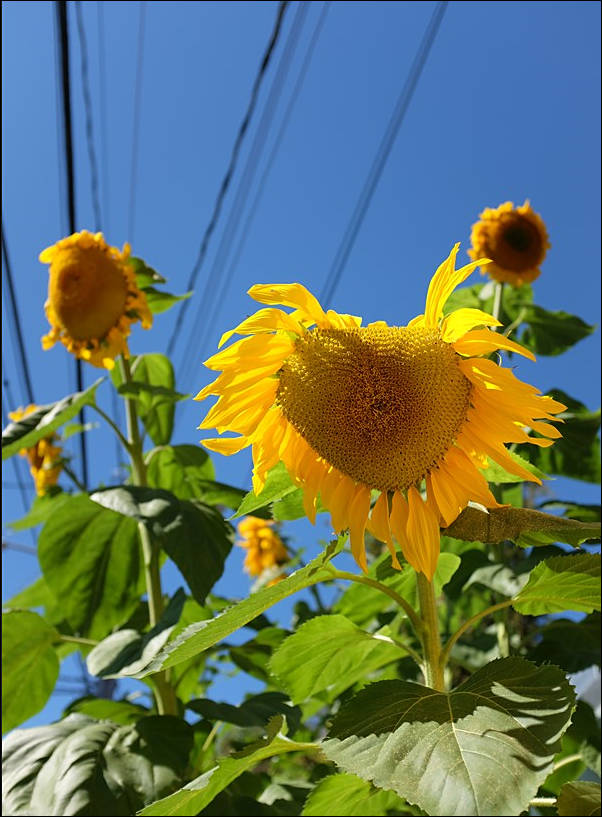
http://www.dpreview.com/galleries/reviewsamples/albums/fujifilm-x100t-beta-real-world-samples#page=1

 photokina31.jpg602 x 817 - 90K
photokina31.jpg602 x 817 - 90K -

 sigma_7.jpg800 x 528 - 150K
sigma_7.jpg800 x 528 - 150K -

X100T majors on operability, with a wealth of improvements that make this the best-handling X100 model yet. It may not offer any significant changes to image quality, but the Fujifilm X100T is still more than worthy of your careful consideration.
http://www.photographyblog.com/reviews/fujifilm_x100t_review/

 sigma_41.jpg800 x 647 - 89K
sigma_41.jpg800 x 647 - 89K -
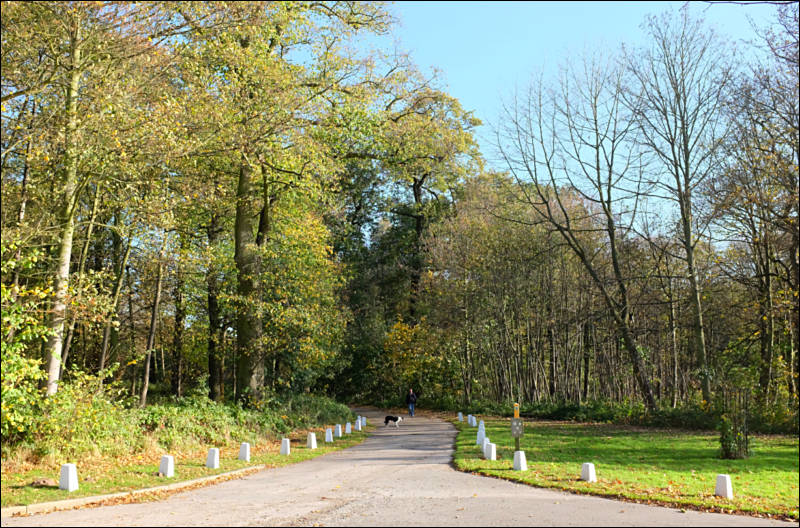
If you are looking for a high quality compact camera with a large sensor, then the classic retro styling and large viewfinder, along with excellent image quality and beautiful Fujifilm colours, make the Fujifilm X100T a great choice, and highly recommended.
http://www.ephotozine.com/article/fujifilm-x100t-full-review-26460

 rose40.jpg800 x 528 - 147K
rose40.jpg800 x 528 - 147K -

Significant improvements have been made to the X100T's movie capabilities with a boost in resolution to Full HD (1920 x 1080 pixels) recording. Users can choose between 60, 50, 30, 25 and 24 frames/second (fps) for both Full HD and HD (1280 x 720 pixels) clips. VGA resolution isn't supported.
Aperture, shutter speed and ISO settings can be adjusted during recordings, with sensitivity restricted to ISO 200-6400. Film simulation is also available in movie mode.
http://www.photoreview.com.au/reviews/advanced-compact-cameras/fixed-lens/fujifilm-x100t

 rose62.jpg597 x 397 - 66K
rose62.jpg597 x 397 - 66K -

It's important to look at what still makes the X100T unique, and crucially whether you want or need those features. Most obviously there's the hybrid viewfinder with the clever optical rangefinder which not only lets you see what's entering the frame, but also overlays a wealth of shooting assistance.

 various1.jpg800 x 512 - 125K
various1.jpg800 x 512 - 125K -

AF on the X100t cannot be trusted at 100%. Sometimes I suddenly see an interesting scene, take my aim and the X100T won’t focus right or will take a long time to focus.

 various.jpg800 x 544 - 71K
various.jpg800 x 544 - 71K -

The Fujifilm X100T autofocus system isn’t the most reliable in the world, which is a big problem for a street-shooting camera.
The image quality you can get of Fujifilm’s X-Trans sensor is really something to behold and the X100T has it in spades.
http://www.thephoblographer.com/2014/12/27/review-fujifilm-x100t/

 various31.jpg800 x 531 - 61K
various31.jpg800 x 531 - 61K -
So how do you make a great product even better? If you’re Fujifilm, you leave what works alone and focus on what needs to be improved. It did just that with the X100T. In addition to the performance improvements and new hardware features, Fujifilm refined the user interface, borrowing a lot of the X-T1’s. It’s not perfect, and can still be daunting for casual users, but it’s better than before and makes the X100T a better camera than ever
http://www.theverge.com/2014/12/15/7391089/fujifilm-x100t-review
-

 pentax29.jpg798 x 532 - 106K
pentax29.jpg798 x 532 - 106K -

 samsung_nx547.jpg800 x 527 - 59K
samsung_nx547.jpg800 x 527 - 59K -
v1.10 firmware available:
- Addition of the messages when 'CONVERSION LENS' setting is changed in the FUNCTION (Fn) SETTING. When an Fn button with "CONVERSION LENS" setting is pressed, either 'conversion lens wide', 'conversion lens tele' or 'conversion lens off' appears in a cyclic manner in addition to the icons.
- Improvement of flash function when "MECHANICAL+ELECTRONIC" is selected. An external flash will fire when the "MECHANICAL+ELECTRONIC" is selected in the "SHUTTER TYPE" option of the shooting menu.
- Improvement of the viewfinder display. When the dual optical viewfinder/electronic range finder (ERF) display is used with the Digital Split Image, the white Focus frame appears in the center of the viewfinder.
- Improvement of Focus Peaking display in the electronic viewfinder under a dark environment for easy focus setting.
http://www.fujifilm.com/support/digital_cameras/software/firmware/x/x100t/
-

 sales24.jpg800 x 555 - 66K
sales24.jpg800 x 555 - 66K -

 dog_20.jpg800 x 525 - 56K
dog_20.jpg800 x 525 - 56K -

 aaset3.jpg638 x 423 - 49K
aaset3.jpg638 x 423 - 49K
Howdy, Stranger!
It looks like you're new here. If you want to get involved, click one of these buttons!
Categories
- Topics List23,976
- Blog5,724
- General and News1,351
- Hacks and Patches1,153
- ↳ Top Settings33
- ↳ Beginners255
- ↳ Archives402
- ↳ Hacks News and Development56
- Cameras2,361
- ↳ Panasonic991
- ↳ Canon118
- ↳ Sony156
- ↳ Nikon96
- ↳ Pentax and Samsung70
- ↳ Olympus and Fujifilm100
- ↳ Compacts and Camcorders300
- ↳ Smartphones for video97
- ↳ Pro Video Cameras191
- ↳ BlackMagic and other raw cameras116
- Skill1,961
- ↳ Business and distribution66
- ↳ Preparation, scripts and legal38
- ↳ Art149
- ↳ Import, Convert, Exporting291
- ↳ Editors191
- ↳ Effects and stunts115
- ↳ Color grading197
- ↳ Sound and Music280
- ↳ Lighting96
- ↳ Software and storage tips267
- Gear5,414
- ↳ Filters, Adapters, Matte boxes344
- ↳ Lenses1,579
- ↳ Follow focus and gears93
- ↳ Sound498
- ↳ Lighting gear314
- ↳ Camera movement230
- ↳ Gimbals and copters302
- ↳ Rigs and related stuff272
- ↳ Power solutions83
- ↳ Monitors and viewfinders339
- ↳ Tripods and fluid heads139
- ↳ Storage286
- ↳ Computers and studio gear560
- ↳ VR and 3D248
- Showcase1,859
- Marketplace2,834
- Offtopic1,319
Tags in Topic
- fujifilm 40




